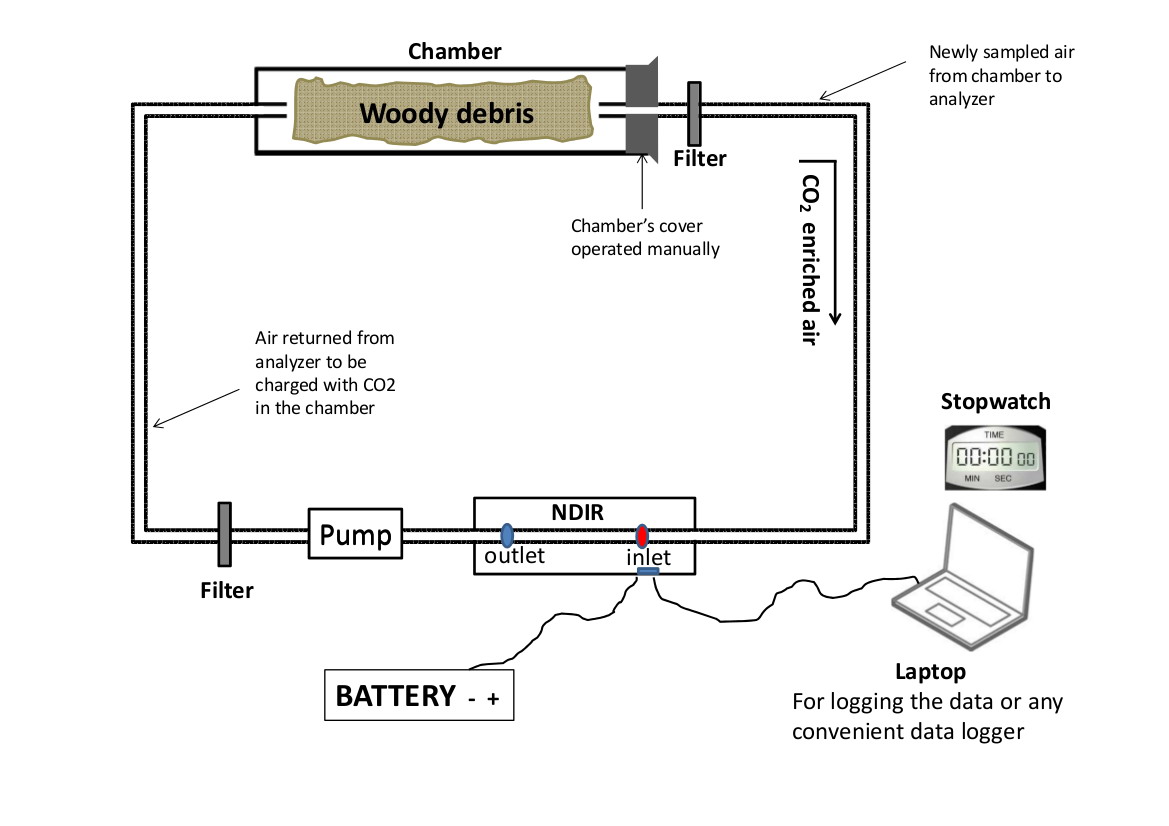Carbon cycle consists of assimilation of C through photosynthesis and C release through respiration. The first has been widely studied and can be modeled at various scales with reasonable confidence. However, respiration remains relatively poorly understood. Infrared gas analyzers, of which non-dispersive infrared gas sensors (NDIR) are by far the most common in operation today, can be connected to chambers to measure gas efflux. There is a crucial need for a common and standardized framework for studies using closed chambers linked to a NDIR.
Together with his teachers (Profs. CAO Kunfang and Rhett Harrison), Dr. Gbadamassi G.O. Dossa of Xishuangbanna Tropical Botanical Garden (XTBG) consulted a large amount of literature and reviewed the methods of calculating respiration rate. They aimed to present the theory behind the CO2 flux calculation when using a NDIR linked to a closed chamber and further illustrate the shortcomings in previous studies and their effects on CO2 efflux calculations.
They found 51 studies since 1975 that had used infra-red gas analyzers to assess the respiration of dead wood and other substrates. Only 11provided equations used to assess the CO2 efflux and from these 72% had made fundamental flaws in the calculation of CO2 production, lead to errors ranging from –8% to +22%. In some cases, studies had compounded two or more errors. Obviously, poor quality model inputs are only likely to delay our understanding of how different factors affect respiration. The infra-red gas analysers measure the CO2 concentration very accurately, but to assess the amount of CO2 being given off by a log it is necessary to convert these numbers using a formula based on the ideal gas law (PV = nRT), from a knowledge of the size of the chamber, the size of the log, the ambient temperature and pressure.
The application of incorrect formulae in the calculation of CO2 shed doubt on some previous results. The researchers of XTBG provided details of appropriate formulae and briefly covered other relevant topics, such as the design of chambers. By using appropriate formula, the reliability of data on the decomposition of woody debris will be improved and it will enhance understanding of how the process will affect and be affected by climate change.
The study entitled “Correct calculation of CO2 efflux using a closed-chamber linked to a non-dispersive infrared gas analyzer” has been published online in Methods in Ecology and Evolution.

Figure of CO2 measuring system (Image by Gbadamassi G.O. Dossa)
Key Words
Wood decomposition, carbon release, calculation, methods
Contact:
Gbadamassi G.O. Dossa,
Key Laboratory of Tropical Forest Ecology, Xishuangbanna Tropical Botanical Garden, Chinese Academy of Sciences,
Mengla, Yunnan 666303, China
E-mail: dossa@xtbg.org.cn

